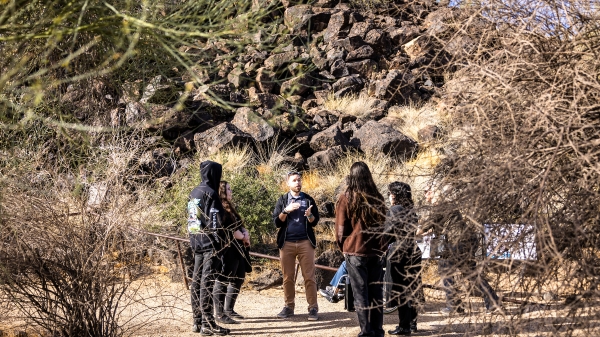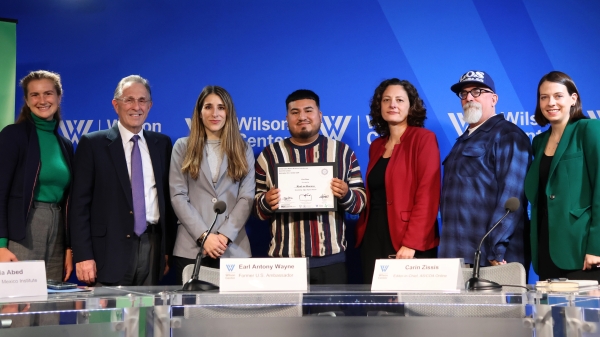Book by dance educator-scholar examines performing arts in higher education

Arizona State University Professor Karen Schupp
Arizona State University Professor Karen Schupp, associate director in the School of Music, Dance and Theatre, recently published “Futures of Performance: The Responsibilities of Performing Arts in Higher Education.”
An edited volume that examines the role of performing arts both in colleges and universities as well as in the performing arts fields, the recent publication features a combination of new voices and seasoned educators, including several chapters written by ASU professors and alumni.
“What is most meaningful about ‘Futures of Performance’ is the focus on what individual and collectives of college and university faculty can — and should — do to insure a vibrant and impactful future for the performing arts,” said Tayloe Harding, dean of the School of Music at University of South Carolina.
The book doesn’t come to a consensus about the future of performing arts or prescribe a specific route for change. Instead, it asks questions and looks at a broad range of perspectives internationally. Schupp said she understands that not everyone agrees on what needs to be done — and that’s OK.
“That's why I put the ‘s’ on the end of ‘future’ — because if performing arts and higher education are going to continue to have a meaningful impact on the lives of our students in our communities, it has to be plural,” Schupp said. “There can't just be one way of doing it.”
Schupp talked about the new book and her perspective on the future of performing arts in higher education.
Question: What is this book about?
Answer: This book is an edited volume looking at what we need to do now in performing arts higher education to create a better future both inside universities and in the professional fields. The choices we make inside the classroom and inside our curriculum impact the immediate experiences of the students. There's a strong throughline in many of the chapters about equity, inclusion and/or belonging. What does it mean to think about responsibility in relation to performing arts?
Q: How is the book structured?
A: I knew from the start I didn't want to organize it as chapters about dance, chapters about music, chapters about theater. There's a balance in the chapters between specificity of discipline versus a broad approach to discussing performing arts in higher education. But they all have takeaways that apply across the board, so I decided to organize it into three sections.
The first section is responsibilities to academia — thinking about the community that we are with every day. What are the responsibilities to the students?
The second section is about responsibility to the fields, and I made "field" plural because when people say they go out in the field, what do they mean by that? It was a way of capturing responsibilities toward and opportunities for professional engagement.
The last section is responsibilities to society, looking at what performing arts programs and universities do for the larger world. So, for example, there's a chapter that argues that the true value of performing arts education is that it teaches us how to participate responsibly in a democratic society. Another chapter uses data from the Pew Research Center’s Next America project to examine what performing arts programs in higher education need to do to better serve the changing demographics of the U.S.
Q: How do you think this book can shape the future of education?
A: What comes up often in this book is that we're still feeling the effects of "No Child Left Behind," even though that's not the educational policy under which we are currently operating. But that was the policy that the current college students experienced when they were in elementary school, so their academic participation in the arts was reduced. The reduction to arts programing in schools is incredibly unfortunate and requires those of us in higher education to acknowledge and honor all of the different ways students learn about music, dance and theater outside of school settings; we must examine how our programs privilege certain sites and types of engagement over others in relation to our admissions practices and curricula. Students who likely have formal training in the performing arts have the financial means to pay for that. Everybody gets four years of math in high school, right? But not everybody gets four years of performing arts in their high schools. So we need to think about our roles and responsibilities in terms of relationship building with other sites of performing arts education and informal learning sites.
Q: What else do you want people to know about this book?
A: From an ASU perspective, I want everyone to know that I'm not the only ASU voice represented in the book. Deanna Swoboda, Max Bernstein, Robert Farid Karimi and Joya Scott are all included. There are also authors who are ASU alumni. I didn't intend to have so many ASU voices when planning for the book, but people submitted their chapter ideas and they were all forward-thinking; this, in turn, makes me feel good about being at ASU.
Q: Why is it important for people to be talking about the future of performing arts and education?
A: Performing arts and education are both dynamic. When they co-exist, as they do in higher education, they are always changing in relation to each other — and that’s part of the beauty. All good teaching and curriculum are context specific, working in direct relation to the goals and values of the students, educational institution and surrounding communities. The ideas presented in the chapters offer readers strategies and “food for thought.” However, the application of those ideas is going to change in every location, and it should. The future of performing arts needs to be varied if we are to help students realize the full potential of the various applications for their work as artist-citizens in society.
More Arts, humanities and education

Petroglyph preserve celebrates 30th anniversary with ancient, modern tales
The Deer Valley Petroglyph Preserve provides a beautiful walk through a pristine desert where chuckwalla lizards are as plentiful…

Kaleidoscope short film contest inspires powerful binational filmmaking in its second year
“We come to this country not to steal anybody’s jobs but to take advantage of the opportunities that the rest ignore. We’ve been…

ASU's Neal Lester reflects on life, death of poet Nikki Giovanni
When Neal Lester heard on Monday that poet and activist Nikki Giovanni had died, the news hit hard.Lester, the founding director…